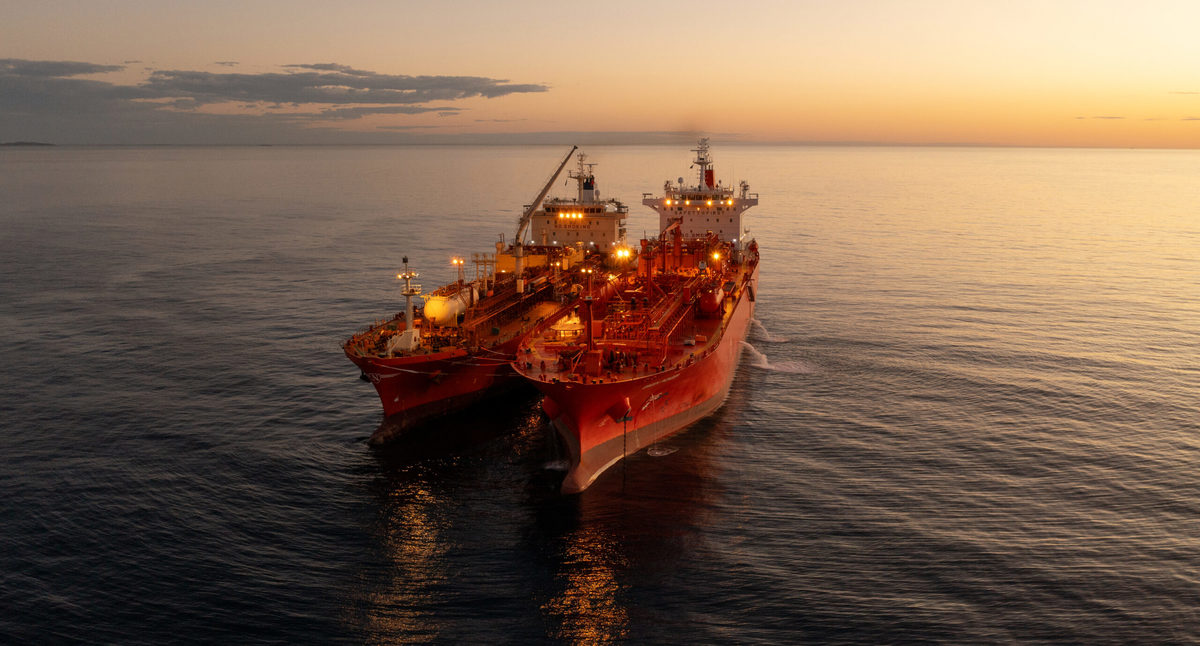Another STS ammonia transfer bolsters ammonia bunkering prospects
Global Centre for Maritime Decarbonisation (GCMD) spearheaded a ship-to-ship (STS) transfer of ammonia in the Australian port of Dampier on 14 September.
 PHOTO: STS ammonia transfer between Navigator Global and the Green Pioneer at the outer anchorage of Port Dampier. Yara Clean Ammonia
PHOTO: STS ammonia transfer between Navigator Global and the Green Pioneer at the outer anchorage of Port Dampier. Yara Clean Ammonia
Port of Dampier is an industrial port in the Pilbara region in Western Australia. It hosted the operation with a consortium that included GCMD, Pilbara Ports and Yara Clean Ammonia.
In the first transfer, around 2,700 mt of ammonia was transferred from the MOL-owned ammonia carrier Green Pioneer to another ammonia carrier, Navigator Global, owned by UK-based gas shipping firm Navigator Gas.
The same cargo was then transferred back to the Green Pioneer in the second operation. Yara Clean Ammonia supplied the ammonia used in the transfers.
This operation “demonstrates that ammonia transfer can be done with the highest safety standards and efficiency in a working port environment,” said Murali Srinivasan, SVP-commercial at Yara Clean Ammonia. It also highlights "the operational viability" of ammonia bunkering in the Pilbara region, GCMD added.
The Pilbara operation marks the second such ammonia transfer this year. In July, commodity trader Trafigura and shipowner Purus completed their first ammonia ship-to-ship ammonia transfer near Ceuta, in the Gibraltar Strait.
Why do ship-to-ship transfers matter?
Ammonia's hazardous and toxic nature demands stringent safety protocols for its use and handling as a marine fuel, especially during bunkering operations and storage.
The IMO is drafting interim guidelines for handling ammonia as fuel, with final approval expected from the Maritime Safety Committee in December.
In the meantime, STS transfers can be used to replicate the key steps involved in ammonia bunkering, as both operations require specialised equipment, robust containment and strict handling procedures to minimise the risk of leaks and exposure to ammonia during fuel transfer between vessels.
“In the absence of ammonia bunkering vessels and ammonia-fuelled ships at this stage, ship-to-ship transfers at anchorage offer the closest proxy to bunkering operations when it replicates the essential steps involved,” GCMD explains.
The data gathered through practical STS ammonia transfers could also help refine and strengthen the IMO's upcoming guidelines for ammonia bunkering.
By Konica Bhatt
Please get in touch with comments or additional info to news@engine.online





